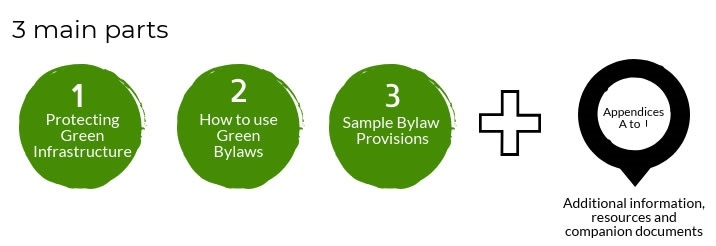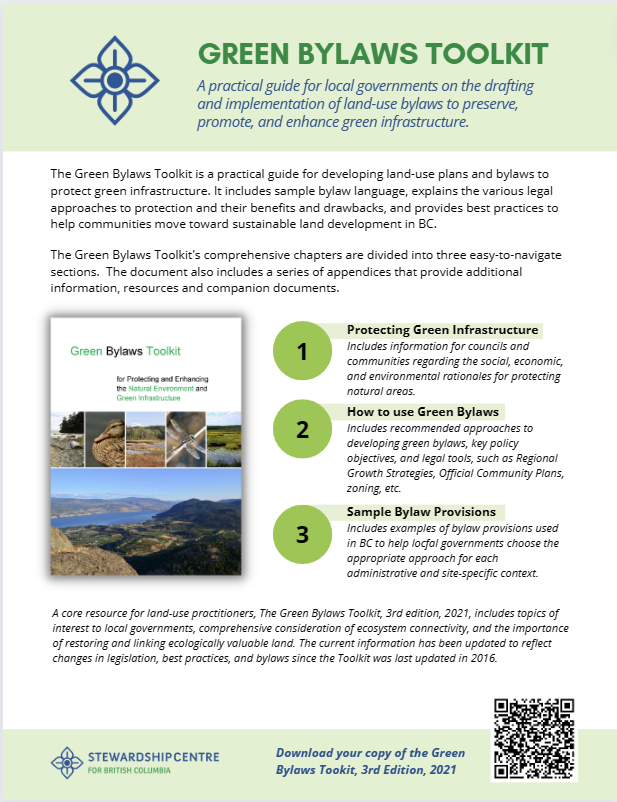Green Bylaws Toolkit
Navigating the Document

The Green Bylaws Toolkit serves three main purposes. For ease of reference, the document has been organized into these three purposes with appendices for additional reference and information. As illustrated in the graphic above, the three main parts and purposes of the document are (1) Protecting Green Infrastructure, (2) How to use Green Bylaws, and (3) Sample Bylaw Provisions. The document also includes a series of appendices that provide additional information, resources and companion documents. Please click on the sections below to learn more about each report section, and download the Green Bylaws Toolkit Introduction and Navigation Guide for later reference.
Chapter 1 provides an introduction to the Toolkit and an overview of the additions and changes made in the 3rd edition. It provides the scope of the Toolkit and outlines how the document is organized and how best to use it.
Chapter 2 discusses the rationales (social, economic and environmental) for protecting natural areas. Use this chapter to inform the public and council.
Chapter 3 provides links to other relevant resources, with notes on how some of them may be used in conjunction with the Toolkit.
Chapter 4 outlines general recommended approaches for developing green bylaws, including a brief discussion of the importance of staff expertise in biology and ecology. The chapter also contains an overview of seven key policy objectives for protecting green infrastructure and offers a list of the top recommended actions for local governments.
Chapters 5-16 each discuss a particular legal tool available to local governments, such as Regional Growth Strategies, Official Community Plans (OCP), zoning, development permitting, regulatory bylaws, tax tools and enforcement, along with recommendations for setting priorities for implementation.
Each chapter contains an overview, a table that lists the relevant legal jurisdictions and the strengths and weaknesses of the regulatory approach, and a discussion of some of the current issues related to the tool in question. These chapters also contain case studies, notes about local governments that are using the tool, and references to other resources. Chapter 16 provides an overview of approaches to enforcing the bylaws.
Chapters 17-28 contain sample bylaw provisions related to the environmental protection tools discussed in Part 2. By showing the range of regulatory options available, the Toolkit can help local governments choose the appropriate approach for each administrative and site-specific context.
Appendix A contains a list of resources consulted in developing the toolkit, including bylaws, plans, and other materials.
Appendix B contains further details on other guides and reference materials that may be used in conjunction with the Green Bylaws Toolkit.
Appendices E-I are a series of companion documents that address over-arching topics such as collaboration between local governments and First Nations, species at risk, and climate change. For a complete list of companion documents, see Section 3.1 (page 21).

